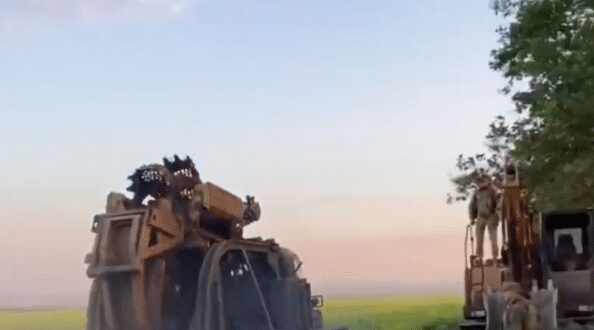Ukrainian President Volodymyr Zelenskyy said last week that he had ordered an expansion of defensive fortifications across the battlefield. Following the failure of Ukraine’s 2023 counteroffensive, Zelenskyy’s announcement may signal that Kyiv intends to adopt a defensive posture in 2024. Digging in could help Ukraine repel future Russian offensives while allowing Kyiv to spare more troops for training in the West.
In his nightly address on November 30, Zelenskyy said he had led a “nationwide meeting on fortifications.” Ukraine must “boost and accelerate the construction of structures” across the frontline and along the country’s borders with Russia and Belarus, focusing especially on threatened areas in eastern Ukraine, the president declared. He heard reports from Ukraine’s defense minister and his first deputy, various military commanders, and regional and local officials. They also discussed how private businesses and foreign partners can help.
The previous week, Ukraine’s Defense Ministry announced a new interdepartmental working group focused on “military engineering and fortification structures.” Functioning as a 24/7 “operational headquarters,” the group will coordinate military and government efforts, the ministry said.
According to the ministry, Ukrainian military units will build fortifications on the first line of defense. Ukraine’s State Agency for Restoration and Infrastructure Development, working with private contractors, will handle construction on the second and third lines. Ukraine’s minister of digital transformation, who will co-lead the working group, said Kyiv has already found financing from Ukrainian businesses for construction in priority areas of the battlefield.
In the months prior to Kyiv’s spring-summer counteroffensive, Russia built fortified defensive lines all across the battlefield and along the Russian-Ukrainian border. In some places, especially the area south of Orikhiv in Zaporizhzhia Oblast, where Ukraine concentrated its main effort during the 2023 counteroffensive, Russia built fallback lines behind the main line. These fortifications, coupled with extensive minefields, helped Russia thwart the counteroffensive.
Taking a page from Moscow’s book could help Ukraine weather what will likely be a tough 2024.
After taking heavy casualties during the counteroffensive, Ukrainian units need time to rest and reconstitute. And Kyiv’s Western backers currently lack enough spare artillery ammunition to resource another major offensive. Western shell production has begun to expand but will take time to really ramp up. Consequently, Ukraine’s artillery-centric military will likely face “shell hunger” next year.
Russia, meanwhile, has received a substantial amount of artillery ammunition from North Korea and is ramping up its own defense-industrial production. Russia will likely hold the initiative for much of next year, especially if Moscow conducts another round of forced mobilization. Fortunately for Kyiv, Russia’s General Valery Gerasimov will likely continue to squander men and materiel on ill-fated offensives like those at Vuhledar and Avdiivka, undercutting Russia’s ability to reconstitute force quality.
Thus, while Zelenskyy may feel a political imperative to continue attacking in order to demonstrate progress to domestic and foreign audiences, a defensive posture would probably make more military sense. Ukraine could sap Russia’s offensive potential, positioning itself to retake the initiative as Western shell production ramps up.
Reinforcing Ukrainian lines and building prepared fallback positions could help thwart future Russian offensives. It could also allow Ukraine to defend with fewer troops. As Ukraine’s top general recently noted, Kyiv currently “cannot easily spare soldiers who are deployed to the front.” But with a better prepared defense, the Ukrainian military might feel comfortable sending more troops — ideally including some of its better, more experienced units — to train in the West.
That, in turn, could help Ukraine regenerate and expand its offensive potential, particularly if the United States and its allies reform their training programs with an eye toward enabling Ukrainian forces to conduct offensive operations at scale. Ukraine’s inability to scale combined-arms operations was a key factor contributing to the failure of the 2023 counteroffensive.
The next year will likely be challenging for Ukraine. But digging in could help Ukraine weather the storm and potentially emerge prepared to counterpunch.
 Eurasia Press & News
Eurasia Press & News



